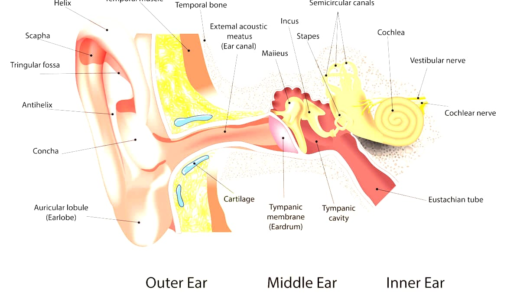The United States Auto Club (USAC) offers numerous benefits to its members, including access to sanctioned events, training resources, and networking opportunities. USAC significantly contributes to the development of auto racing in the U.S. through safety initiatives, regulatory frameworks, and community engagement. Notable USAC races like the Indianapolis 500 and the Turkey Night Grand Prix highlight the organization’s influence and the excitement of competitive racing.
Understanding the United States Auto Club (USAC)
The United States Auto Club (USAC) is a key player in the world of auto racing. Founded in 1956, USAC serves as a sanctioning body for various racing series across the United States. It plays an essential role in organizing, promoting, and regulating motorsport events, ensuring a structured environment for both competitors and fans.
USAC’s impact on auto racing extends to its commitment to safety, fair competition, and the development of new talent. By providing a platform for racers from different backgrounds, USAC helps foster a vibrant racing community.
Types of Racing Series Sanctioned by USAC
USAC sanctions a diverse array of racing series, catering to various interests and skill levels. Some of the prominent types include:
- Silver Crown Series: This series features powerful cars that race on both dirt and asphalt tracks, showcasing the versatility of drivers.
- National Sprint Car Series: Known for its thrilling, high-speed action, this series is a favorite among fans who enjoy close-quarters racing.
- National Midget Series: This series highlights smaller cars, emphasizing driver skill and precision on tight tracks.
- USAC HPD Midget Series: Aimed at entry-level racers, this series provides a pathway for new talent to enter the sport.
Each series features its own unique challenges and excitement, making USAC a vital part of the auto racing landscape.
Ensuring Safety in Auto Racing
Safety is a top priority for USAC. The organization implements stringent safety measures to protect drivers, teams, and spectators. Some key safety initiatives include:
- Mandatory Safety Equipment: All participants must use helmets, fire suits, and other protective gear that meet USAC standards.
- Track Safety Inspections: USAC conducts regular inspections of race tracks to ensure they meet safety protocols.
- Emergency Response Plans: Each event has a comprehensive emergency response plan in place, including trained medical personnel on-site.
These measures not only enhance the safety of events but also instill confidence in drivers and fans alike.
Roles and Responsibilities of USAC Officials
USAC officials play a crucial role in maintaining the integrity of auto racing events. Their responsibilities include:
- Race Oversight: Officials ensure that races are conducted fairly and according to established rules.
- Rule Enforcement: They monitor compliance with USAC regulations and address any infractions during events.
- Driver Support: Officials assist drivers with questions about rules, safety, and procedures, promoting a positive racing environment.
The presence of knowledgeable and dedicated officials enhances the overall racing experience and upholds USAC’s reputation.
Driver Licensing Process for USAC Racers
The driver licensing process for racers wanting to compete under the USAC banner is thorough and systematic. To obtain a USAC license, drivers must first meet specific eligibility requirements. This typically includes age restrictions, prior racing experience, and a demonstration of skill.
Here’s a breakdown of the key steps in the licensing process:
- Application Submission: Prospective drivers need to fill out a detailed application form, providing personal information and racing history.
- Medical Examination: A medical exam is mandatory to ensure that drivers are physically fit to race. This is crucial for safety.
- Skill Assessment: New drivers may need to participate in a skills assessment or training sessions to showcase their racing abilities.
- Payment of Fees: There are licensing fees that must be paid to complete the application process.
- Issuance of License: Upon successful completion of the above steps, drivers will receive their USAC license, allowing them to compete in sanctioned events.
This structured approach not only ensures that drivers are adequately prepared for the rigors of racing but also contributes to the overall safety of the sport.
Sanctioning Racing Events by USAC
The event sanctioning process by USAC is vital for ensuring that races meet established standards and regulations. Organizers wishing to hold a race must go through specific steps to obtain USAC sanctioning.
Here’s how the process typically unfolds:
- Application for Sanction: Event organizers must submit a formal application to USAC detailing the event’s specifics, including location, date, and type of race.
- Track Approval: USAC officials will inspect the proposed track to ensure it meets safety and competition standards.
- Compliance with Regulations: Organizers must ensure that the event complies with USAC rules, including safety measures, class specifications, and event format.
- Fee Payment: A sanctioning fee is required, which varies based on the event type and scale.
- Confirmation of Sanction: Once all requirements are met, USAC issues an official sanction, allowing the event to proceed under its auspices.
Obtaining USAC sanctioning not only lends credibility to the event but also assures participants and fans that it adheres to high standards of safety and organization.
USAC Rule Enforcement During Races
Rule enforcement is a cornerstone of USAC’s operations, ensuring fair competition and safety during races. USAC officials are responsible for monitoring adherence to established rules and regulations throughout the event.
The enforcement process includes the following key components:
- Pre-Race Inspections: Before races, officials conduct thorough inspections of cars and equipment to ensure compliance with USAC regulations.
- On-Track Monitoring: During the race, officials closely watch for any infractions, such as illegal maneuvers or equipment violations.
- Post-Race Review: After the race, results are reviewed, and any potential rule breaches are investigated. This may involve checking vehicle specifications and conducting interviews.
- Penalties and Appeals: If violations are found, officials can impose penalties ranging from fines to disqualification. Drivers can appeal decisions through a formal process.
Through vigilant rule enforcement, USAC maintains the integrity of the sport, ensuring that all participants compete on a level playing field.
Benefits of Being a USAC Member
The United States Auto Club (USAC) offers numerous benefits for its members, making it an attractive organization for racers and racing enthusiasts alike. Membership provides access to exclusive resources and support, which can significantly enhance a racer’s experience and opportunities. Here are some key advantages of being a USAC member:
- Access to Sanctioned Events: Members can participate in USAC-sanctioned races, which are recognized for their high standards of safety and competition.
- Training and Education: USAC offers educational resources, including seminars and workshops, to help drivers improve their skills and knowledge.
- Networking Opportunities: Being part of USAC allows members to connect with other racers, officials, and industry professionals, fostering valuable relationships.
- Discounts on Products and Services: Members often receive discounts on racing gear, insurance, and other related services, helping to reduce costs.
- Recognition and Awards: USAC members are eligible for various awards and recognitions, which can boost their profile in the racing community.
Overall, USAC membership not only enhances a racer’s competitive edge but also provides a supportive community that encourages growth and development in the sport.
USAC’s Contributions to Auto Racing Development
USAC plays a pivotal role in the development of auto racing in the United States. By sanctioning various racing series and implementing robust safety standards, USAC fosters a culture of professionalism and innovation in the sport. Here are some of the ways USAC contributes to auto racing:
- Talent Development: USAC provides pathways for emerging drivers through entry-level series, helping them gain experience and exposure.
- Safety Initiatives: The organization continually updates its safety measures, ensuring that all participants can race in a secure environment.
- Regulatory Framework: USAC establishes clear rules and regulations that promote fair competition and integrity within the sport.
- Community Engagement: USAC hosts events and initiatives that engage fans and promote the sport, increasing its visibility and appeal.
Through these contributions, USAC not only enhances the quality of auto racing but also ensures its sustainability and growth for future generations.
Notable USAC Races
Throughout its history, USAC has sanctioned numerous prestigious races that have become milestones in the auto racing calendar. These events showcase the skills of talented drivers and the excitement of competitive racing. Some notable USAC races include:
- Indianapolis 500: Perhaps the most famous race in the world, the Indianapolis 500 has a rich history of USAC involvement.
- Turkey Night Grand Prix: This annual midget car race has been a staple in the racing community for decades.
- Hoosier Hundred: This historic race features Silver Crown cars and is known for its thrilling competition on dirt tracks.
- USAC National Championship: The championship series showcases the best drivers across various racing disciplines under USAC sanctioning.
These events not only highlight the talent within the USAC community but also contribute to the rich tapestry of American auto racing.





Comments are closed.